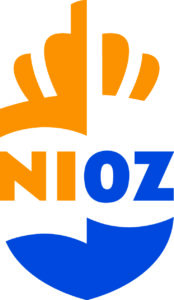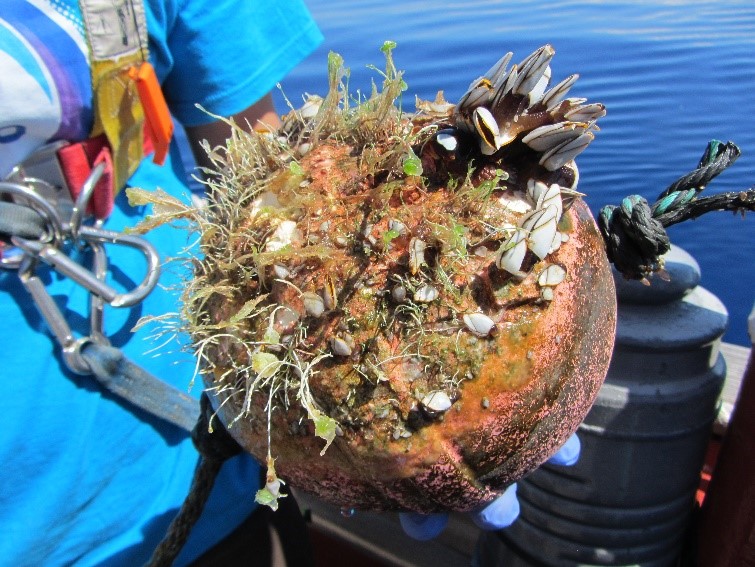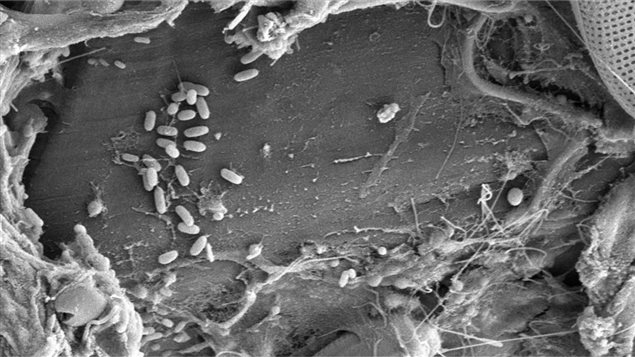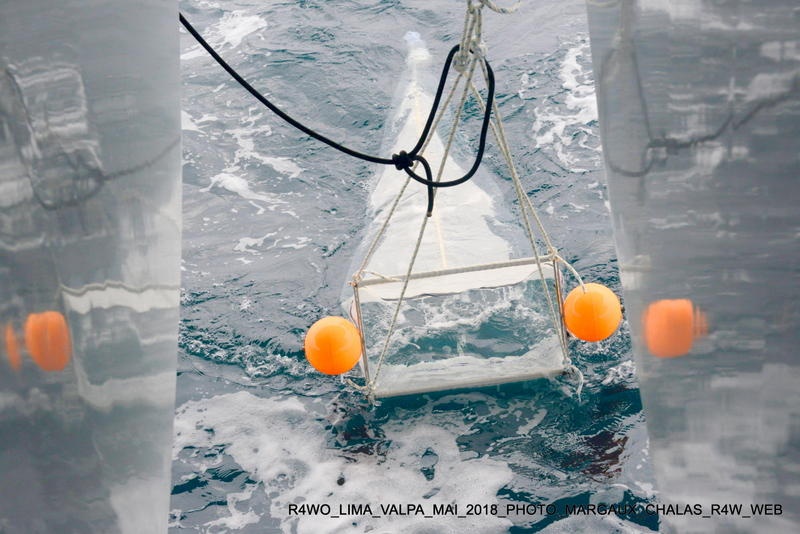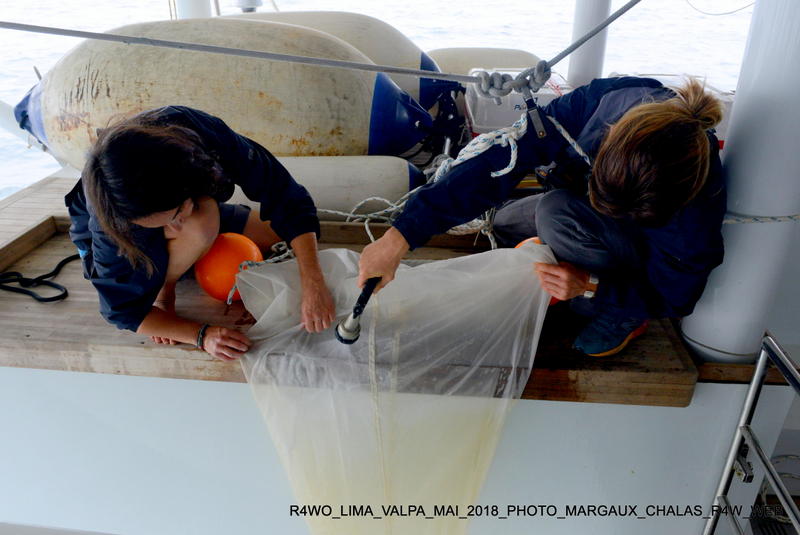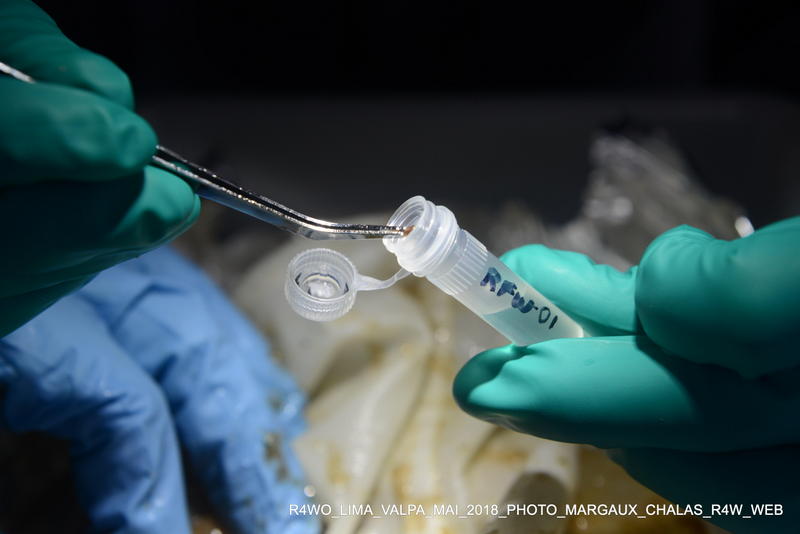Plastisphere mission in the South-East Pacific
Samples taken by the crew of Race for Water from the Chilean coast to French Polynesia for the “Plastisphere” project – from 29 July 2018 to 4 October 2018.
- Plastic Buoy – Eric Zettler Nioz
- Plastiques vue au microscope électronique – Erik Zettler
During the passage across the South-East Pacific Ocean from Concepción to Tahiti, regular samples of surface plastic particles have been taken by the crew within the context of the “Plastisphere” project. Indeed, the areas of plastic accumulation in the open ocean, such as in the subtropical gyre of the South Pacific, are making it possible to develop a new ecosystem: the plastisphere.
Bacteria, green algae as well as small planktonic organisms are developing on particles floating amidst the currents in the oceans.
What are the species that make up the plastisphere? How do they interact? What is their impact on the lifecycle of oceans? Finding the answers to these questions is the current mission for Dr. Linda Amaral Zettler and Dr. Erik Zettler, both researchers at the NIOZ, the Royal Netherlands lnstitute for Sea Research which are supporting this “Plastisphere” project.
This project focuses on the analysis of the DNA of the organisms attached to the plastic particles so as to determine the entire microbial community living on these pieces of plastic. To contribute to this project, the crew of the Race for Water Odyssey is collecting a set of data during its passage across the South-East Pacific, a zone which still boasts very little sampling in terms of plastic pollution.
The samples collected are conserved on-board before being analysed at the NIOZ. The Plastisphere project is also aiming to inform populations about the importance of microbial life and its link with marine waste.
Testimony from Dr. Linda Amaral-Zettler, microbiologist at the Royal Netherlands Institute for Sea Research (NIOZ) and director of the Plastisphere study
“Within the oceanic gyres as well as near the coasts, we’re hoping to understand which organisms make up what we’ve called the plastisphere and how they influence the marine environment. In this way, we need a large number of water samples from a variety of geographical zones so as to study the microbial interactions. Of course, near the coast, the collection is easier than in the middle of the oceans. The Race For Water Foundation’s help during its passage across the Pacific will provide us with precious data”.
To find out more about this project, we invite you to consult the following articles on our blog:
SCIENTIFIC MISSIONS ABOARD RACE FOR WATER
FIRST TEST OF THE PLASTISPHERE PROTOCOL ABOARD RACE FOR WATER
RACE FOR WATER EMBARKS ON A NEW STUDY: THE PLASTISPHERE
A few bibliographical references:
- De Tender, C.; Schlundt, C.; Devriese, L.; Mincer, T.J.; Zettler, E.R.; Amaral-Zettler, L.A. (2017). A review of microscopy and comparative molecular-based methods to characterize “Plastisphere” communities. Anal. Methods 9 (14): 2132-2143.
- Linda A Amaral-Zettler, Erik R Zettler, Beth Slikas, Gregory D Boyd, Donald W Melvin, Clare E Morrall, Giora Proskurowski and Tracy J Mincer (2015). The biogeography of the Plastisphere: implications for policy. Front Ecol Environ 13 (10): 541-546.
- Erik R. Zettler, Tracy J. Mincer and Linda A. Amaral-Zettler (2013). Life in the “Plastisphere”: Microbial Communities on Plastic Marine Debris. Environmental Science & Technology 47, 7137-7146.
Mission Partner :
